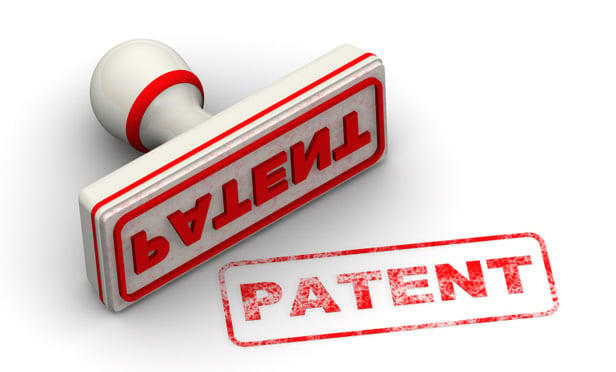Columns & Departments

Case Notes
News Agencies Wanted Trump's Divorce Records: Judge Said 'No'<br>NJ Alimony Reduction Amendments May Be Applied Retroactively<br>Conviction Upheld: Divorced Man Threatened to 'Kill and Eat' Judge and His Family

CMO Best Practices: Some Tips to Make a Really Tough Job a Little Easier
The issues that I confronted a dozen years ago when I became a CMO for the first time are very much the same issues that my CMO brothers and sisters face today. Irrespective of whether you've had decades of experience or not, the job is tough. Well, the job is relatively easy, but ensuring that your team members get all the credit and your firm hits its success metrics, while maintaining your visibility and growing your perceived value, remains very much a challenge to even the most seasoned professionals.
Features

<i>Leadership</i><br>Executive Presence
Lawyers who exhibit "executive presence" are more likely to make partner, to gain clients' trust and loyalty, and to receive referrals from others. Executive presence is easy to spot, but difficult to define. A lucky few are born with it, but, in most cases, it is learned. This article discusses what executive presence is and how you can learn it.
Features

How to Fail at Collaboration
For firms or teams with historically non-collaborative cultures (and that describes 99.9% of them), this "whole collaboration thing" has become a huge annoyance, an attempted interference with "how we've always practiced law." For these folks, the challenge is thorny: Convince everyone that their culture is changing with the times while continuing to conduct business as usual. When they fail, there is often a huge — and demoralizing — gap between the cup and the lip.
Features

<i>Professional Development</i><br>Survey: Today's Am Law Chief Marketing Officer
<i><b>Dramatic Change Defines the Position</i></b><p> Perhaps no non-practicing lawyer position has changed as dramatically as that of the leading marketing professional, which bears no resemblance to the position in the 1990s. Twenty-five years ago, law firm marketing executives were asked to put together brochures and prepare seating charts for client and partner functions. It's a different world today.
Features

<i>Media & Communications</i><br>Getting Quoted on Breaking News
When news breaks, reporters want a source immediately — not in an hour, later that day or first thing the next morning. Reporters who can get to a source first and fast — and are confident that source will provide reliable and insightful analysis — win the day. If you want to be considered and quoted as a thought leader on timely topics, understanding the compressed timing of the news cycle is critical. To get on a key reporter's speed dial, here are three tips you can incorporate into your PR and marketing activities.
Features

<b><i>Online Extra</b></i><br>Financial Industry Groups Slam NY's Proposed Cybersecurity Rules
Major banking and insurance industry groups are attacking New York's proposed regulation requiring member companies to adopt stringent protections against cyberattacks that compromise consumers' confidential information.
Features

Salvaging a Patent After a Post-Grant Proceeding
When the Patent Trial and Appeal Board (PTAB) decides to institute a post-grant proceeding, the subject patent is in jeopardy.
Features

Retiring Boomers Pose Big Challenges For Firms
The boomer generation — 75 million Americans born between 1946 and 1964 — and a tiny cadre of over-70s Silent Generation lawyers currently make up just under half of partners at Am Law 200 firms. As partners with the greatest seniority, they constitute a majority in the equity and management ranks, and control an outsize share of client relationships. The impacts of retirement are amplified because a long surge in hiring and promotion that began when boomers entered law firms has halted since the financial crisis.
Features

Duty to Warn and Third-Party Conduct: A Look at Two Recent New York Cases
In the past year, New York's highest court, the Court of Appeals, issued two decisions addressing both the scope of a defendant's duty to warn in negligence and products liability actions, and the scope of tort liability in actions predicated upon third-party conduct.
Need Help?
- Prefer an IP authenticated environment? Request a transition or call 800-756-8993.
- Need other assistance? email Customer Service or call 1-877-256-2472.
MOST POPULAR STORIES
- How to TOOT Your Own Horn: Exceptional Self EvaluationsIt's that time again. As the year comes to a close many firms are beginning the associate review process. Even if your firm does not have a formal review process I recommend that you write a self-evaluation that outlines your achievements and specifies your goals for the coming year.Read More ›
- The DOJ's New Parameters for Evaluating Corporate Compliance ProgramsThe parameters set forth in the DOJ's memorandum have implications not only for the government's evaluation of compliance programs in the context of criminal charging decisions, but also for how defense counsel structure their conference-room advocacy seeking declinations or lesser sanctions in both criminal and civil investigations.Read More ›
- The DOJ's Corporate Enforcement Policy: One Year LaterThe DOJ's Criminal Division issued three declinations since the issuance of the revised CEP a year ago. Review of these cases gives insight into DOJ's implementation of the new policy in practice.Read More ›
- Defending Your Career: Self Advocacy at Review TimeFirms have taken a hit due to COVID-19 and some will use this review cycle to pinpoint underperformers and reduce compensation. This is why it's even more important for you to make a case for yourself.Read More ›
- Use of Deferred Prosecution Agreements In White Collar InvestigationsThis article discusses the practical and policy reasons for the use of DPAs and NPAs in white-collar criminal investigations, and considers the NDAA's new reporting provision and its relationship with other efforts to enhance transparency in DOJ decision-making.Read More ›
